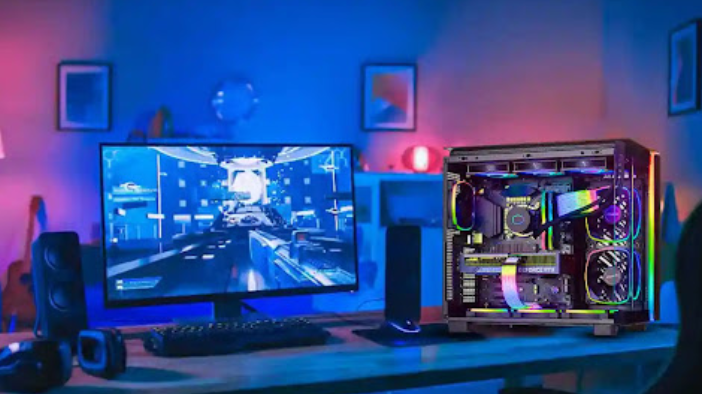For serious gamers, a 120Hz monitor isn’t just a luxury—it’s a gateway to smoother gameplay, faster reaction times, and a more immersive experience. But owning a 120Hz display is only half the battle; your gaming PC needs to be optimized to consistently hit that refresh rate. Otherwise, you’re leaving performance on the table. Here’s everything you need to know to unlock the full potential of 120Hz gaming.

Before diving into software tweaks, ensure your PC and monitor are 120Hz-capable. Start with the monitor: Check its specifications to confirm it supports 120Hz (or higher) over its available ports—HDMI 2.0+, DisplayPort 1.2+, or USB-C (if applicable). Older HDMI 1.4 ports, for example, max out at 60Hz for 1080p, so using the wrong cable or port is a common bottleneck.
Next, assess your GPU and CPU. While 120Hz is less demanding than 144Hz or 240Hz, your hardware still needs to push at least 120 frames per second (FPS) to match the refresh rate. For 1080p 120Hz gaming, mid-range GPUs like the NVIDIA RTX 3060 or AMD RX 6600 should suffice for most titles. For 1440p or 4K 120Hz, aim for high-end options like the RTX 4070 or RX 7900 XT. Your CPU matters too—bottlenecks here can limit FPS, so pair your GPU with a capable processor (e.g., Intel Core i5-13400F or AMD Ryzen 5 7600).
Outdated drivers are one of the biggest roadblocks to 120Hz performance. GPU drivers are 尤为 critical:
For NVIDIA users: Open GeForce Experience, navigate to the “Drivers” tab, and install the latest Game Ready Driver. These updates often include optimizations for new titles and refresh rate stability.
For AMD users: Use Radeon Software to check for updates. Enable “Radeon Chill” (if needed) to balance FPS and power, but ensure it doesn’t cap frames below 120.
Don’t forget your monitor’s firmware. Manufacturers occasionally release updates to fix refresh rate bugs or improve compatibility with GPUs. Check the manufacturer’s website for your model’s latest firmware.
Even powerful PCs can struggle with 120Hz if in-game settings are misconfigured. The goal is to maintain a steady 120 FPS—drops below that will make the 120Hz display feel choppy.
Resolution: Prioritize 1080p for 120Hz if your GPU is mid-range. 1440p or 4K requires significantly more horsepower. If you insist on higher resolutions, consider upscaling technologies like NVIDIA DLSS or AMD FSR (set to “Performance” or “Balanced” mode) to boost FPS without a huge hit to visuals.
Graphics Presets: Avoid “Ultra” settings unless your GPU is flagship-tier. Lower resource-heavy options like shadow quality, anti-aliasing (use FXAA instead of MSAA), and volumetric lighting. These settings often tax the GPU the most.
VSync and G-SYNC/FreeSync: Disable VSync (it adds input lag), but enable G-SYNC (NVIDIA) or FreeSync (AMD) if your monitor supports it. These technologies sync the display’s refresh rate with your GPU’s FPS, eliminating screen tearing while keeping input lag low—critical for 120Hz.
Windows settings can quietly sabotage your 120Hz goals. Here’s how to fix them:
Set the Refresh Rate: Right-click your desktop, select “Display settings,” then “Advanced display.” Under “Refresh rate,” choose 120Hz. Some monitors default to 60Hz, so double-check this!
Disable Background Apps: Apps like Chrome, Discord, or antivirus software can hog CPU/GPU resources. Press Ctrl+Shift+Esc to open Task Manager, and end unnecessary processes before gaming.
Power Plan: Switch to the “High performance” power plan (search “Power options” in Windows). This ensures your CPU and GPU run at maximum clock speeds, avoiding throttling that kills FPS.
Overclocking: If you’re comfortable, overclocking your GPU (using MSI Afterburner) or CPU (via BIOS) can eke out extra FPS. Start with small increments and monitor temperatures to avoid overheating.
Monitor Input Lag: Use tools like “Input Lag Tester” to check for delays. Some monitors have a “Game Mode” that reduces input lag—enable it, but note that it may slightly dim colors.
Check for Bottlenecks: Use software like MSI Afterburner’s OSD to monitor CPU and GPU usage while gaming. If your CPU is at 90%+ and GPU is under 70%, your CPU is bottlenecking the GPU—upgrade it for better 120Hz performance.
Using the Wrong Cable: Always use HDMI 2.1 or DisplayPort 1.4 cables for 120Hz at 1440p/4K. Cheap or old cables can’t handle the bandwidth.
Ignoring Thermal Throttling: Dust-clogged fans or poor airflow cause GPUs/CPUs to throttle. Clean your PC regularly and ensure proper cooling (e.g., add case fans or upgrade to a liquid cooler).
Neglecting Game Updates: Developers often release patches to fix FPS drops. Keep your games updated to benefit from performance improvements.
Optimizing your gaming PC for 120Hz isn’t just about raw power—it’s about balancing hardware, software, and settings to achieve consistent 120 FPS. By checking your monitor’s compatibility, tweaking in-game settings, updating drivers, and fine-tuning Windows, you’ll unlock the buttery-smooth gameplay that makes 120Hz displays worth every penny. For competitive gamers, those extra frames can mean the difference between victory and defeat—so take the time to optimize, and feel the difference for yourself.